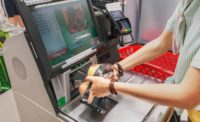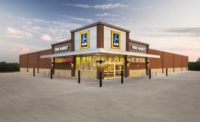Getting Strategic About Candy and Self-Scanning
Checkouts
Mary Ellen Kuhn
Love them or hate them, self-scanning checkout lanes
are a retailing reality these days. Such checkouts have obvious potential
to negatively affect front-end confectionery sales because they often
don’t include merchandising racks for candy and gum.
As a consumer, I admit that I often fall into the
“hate them” camp. This is especially true when I rush in early
on a Saturday morning to scoop up some fruit for a soccer game half-time
snack, only to find myself standing there impatiently with a bag of oranges
in hand and not a manned checkout aisle in sight! But my occasional
frustration with paging through listings of produce UPC codes
notwithstanding, it seems clear that we’ll be seeing more
self-checkout lanes in supermarkets and other classes of trade in the
months ahead.
In a recent study conducted by IHL Consulting Group,
Franklin, Tenn., 31 percent of the supermarket retailers interviewed said
they planned to install self-checkout systems this year; 50 percent said
they would do so by June 2006.
That retailers are embracing self-checkout is not
surprising. According to IHL, return on investment in a self-scanning unit
can be expected within 11 to 16 months, thanks to lower labor costs as well
as shrink reduction. (Self-scanning means less employee theft.) As for
shoppers, many opt for self-checkout in order to save time or simply
because it makes them feel more in control.
Given this inevitable progression toward
self-checkout, it’s time for the candy industry to move proactively.
Candy manufacturers need to partner with vendors of self-scanning equipment
to develop some creative merchandising solutions. How about some display
fixtures customized to fit with self-scanning equipment? And why not invite
magazine vendors to get in on the act as well? According to the
“Front-End Focus” study conducted a couple of years ago by
Northbrook, Ill.-based consulting company, Dechert-Hampe, magazines are the
No. 1 revenue stream at the checkout, accounting for 33.7 percent of sales,
closely followed by candy with 31.7 percent of sales. Armed with statistics
such as these, it shouldn’t be all that hard to pique
retailers’ interest. Neither retailer nor candy vendor benefits when
opportunities for impulse sales are lost.
Of course, you know that all this won’t stop
with self-scanning. Technology races on. Next up is RFID (Radio Frequency
Identification) in which each SKU carries an RFID tag. Eventually, shoppers
may skip the checkout process altogether as an RFID reader in the shopping
cart automatically track items chosen, calculates the bill and deducts it
from the shopper’s bank or credit card.
But that’s a subject for another day. Meanwhile,
let’s get cracking on figuring out more ways to work candy into
self-scanning checkout lanes.
Seen in the Store
Shopping in my local Dominick’s Supermarket, I
noticed a new twist on product sampling in the bulk candy section. A sign
adjacent to the bulk candy fixture invited shoppers to try three candies
for 25 cents. What a great idea for encouraging trial! Sometimes it’s
the little things like this that make a difference.




